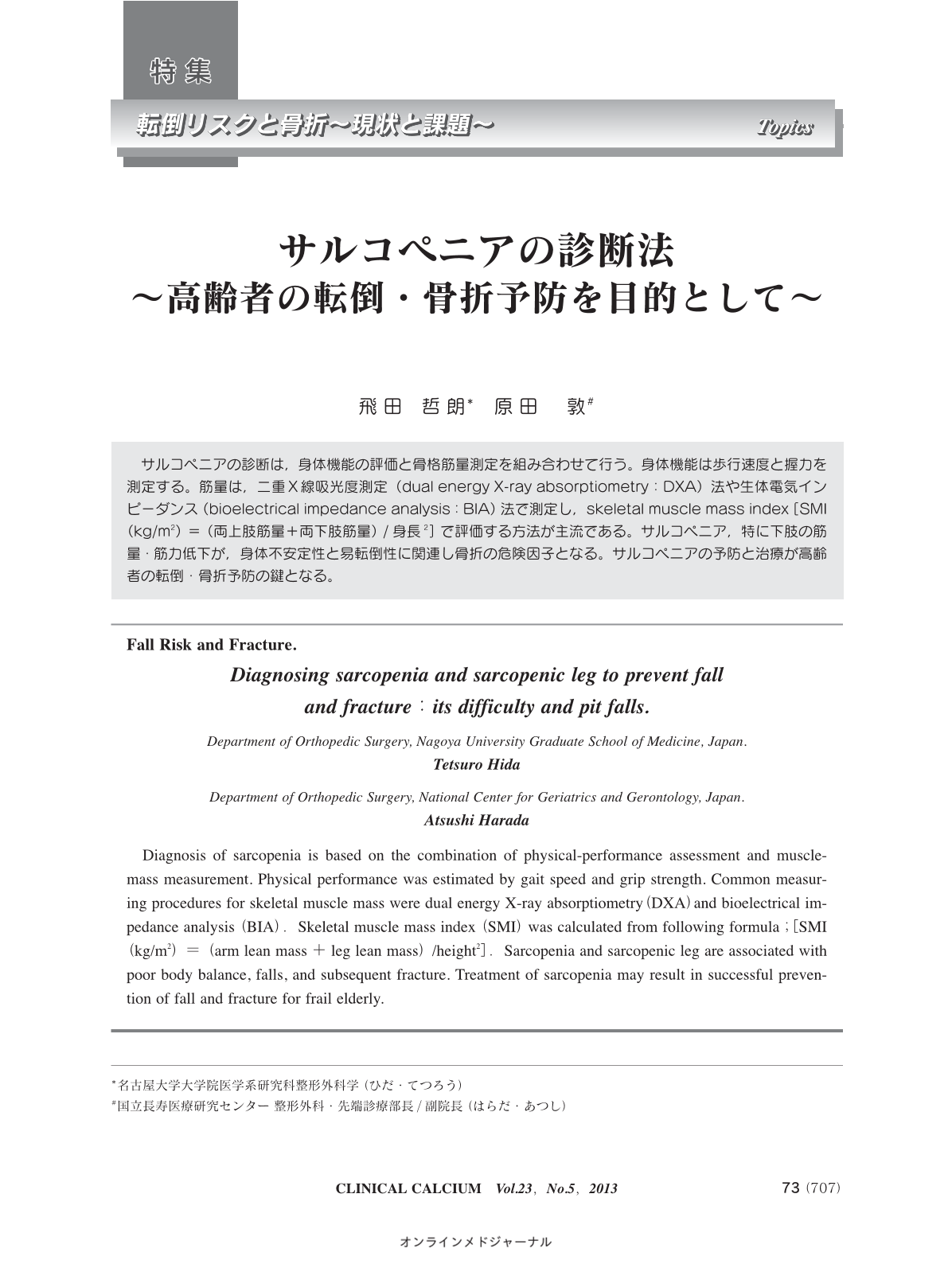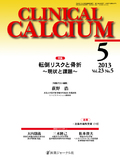Japanese
English
- 有料閲覧
- Abstract 文献概要
- 1ページ目 Look Inside
- 参考文献 Reference
サルコペニアの診断は,身体機能の評価と骨格筋量測定を組み合わせて行う。身体機能は歩行速度と握力を測定する。筋量は,二重X線吸光度測定(dual energy X-ray absorptiometry:DXA)法や生体電気インピーダンス(bioelectrical impedance analysis:BIA)法で測定し,skeletal muscle mass index[SMI(kg/m2)=(両上肢筋量+両下肢筋量)/身長2]で評価する方法が主流である。サルコペニア,特に下肢の筋量・筋力低下が,身体不安定性と易転倒性に関連し骨折の危険因子となる。サルコペニアの予防と治療が高齢者の転倒・骨折予防の鍵となる。
Diagnosis of sarcopenia is based on the combination of physical-performance assessment and muscle-mass measurement. Physical performance was estimated by gait speed and grip strength. Common measuring procedures for skeletal muscle mass were dual energy X-ray absorptiometry(DXA)and bioelectrical impedance analysis(BIA).Skeletal muscle mass index(SMI)was calculated from following formula;[SMI(kg/m2)=(arm lean mass+leg lean mass)/height2].Sarcopenia and sarcopenic leg are associated with poor body balance, falls, and subsequent fracture. Treatment of sarcopenia may result in successful prevention of fall and fracture for frail elderly.



